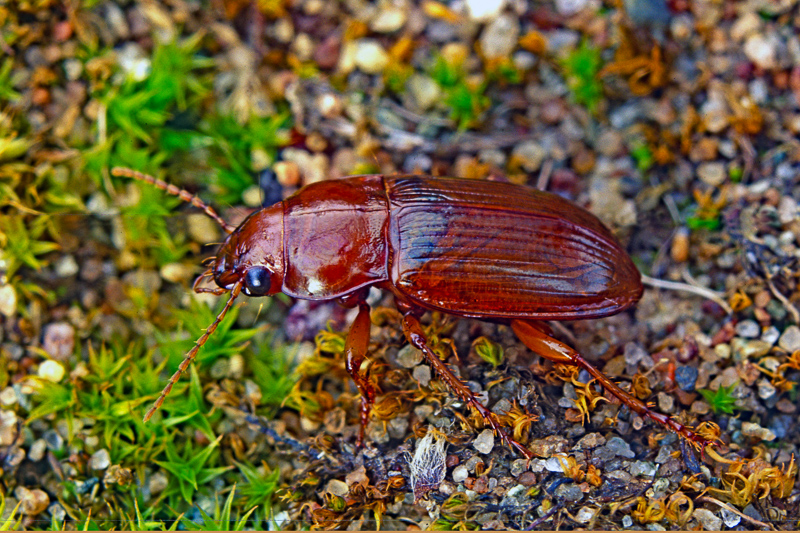Amara fulva (Mueller, 1776)
 |
Description: An 8-10mm long dull yellow-brown to brown Amara often with strong greenish reflections. Restricted to dry, open, sandy places on lakeshores or the coast. Phytophagous. Widespread but very local.
NI account: Restricted to sandy localities around the coast and to sandy shorelines on Lough Neagh. Common where it occurs.
Ecology: Very local in loose sand habitats above coastal strandlines but easy to overlook through its habit of burrowing beneath the surface. Probably declining due to disturbance of its preferred habitat.
Distribution: A Eurosiberian Wide-temperate species (64) distributed across Europe to Asia Minor and east into western Siberia. Introduced in N. America.
Similar Species: Amara consularis: less flat; darker, without metallic reflection; eyes semi-globular A. apricaria: narrow, cylindrical; elytral striae strongly punctate; upper surface mid to dark brown with bronze reflection
Key Identification Features:
- Body broad, flat, with a characteristic 'oval' shape
- Head with two supra orbital punctures
- Elytra lacking pore-puncture at base of scutellar stria
- Terminal spur of pro-tibia simple
- Pronotum with sinuate sides but with denticulate hind angles (Fig. 86)
- Eyes flat
- Upper surface yellow-brown with greenish lustre, antennae and legs yellow
Distribution Map from NBN: Amara fulva at National Biodiversity Network mapping facility, data for UK.
iNaturalist: Amara fulva at iNaturalist World Species Observations database.
GBIF data for Amara fulva | Classification: Insecta, Coleoptera, Carabidae, Amara
Thumbnails for genus Amara
| Anderson, R., 2025. Amara fulva. (Mueller, 1776). [In] Ground Beetles of Ireland. https://www2.habitas.org.uk/beetles/species.php?item=7359. Accessed on 2025-04-03. |